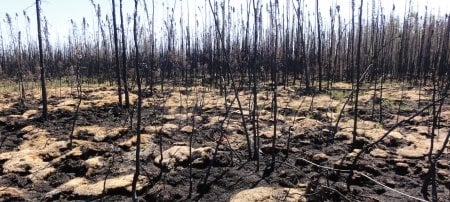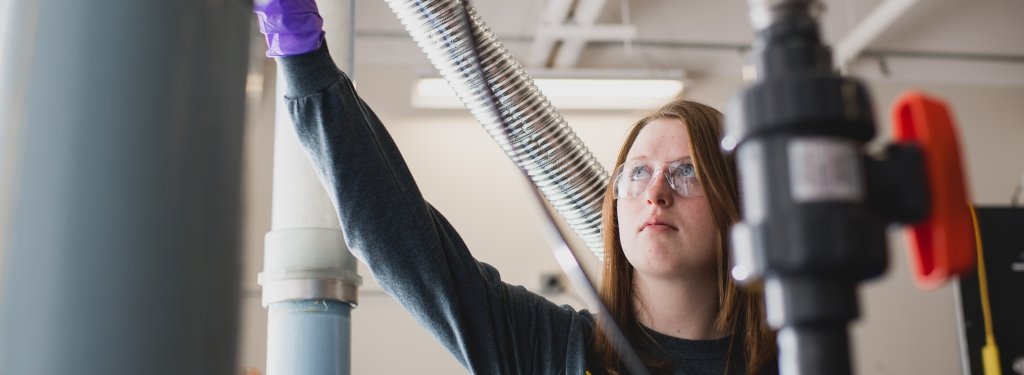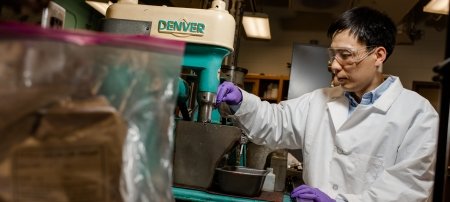Climate Change, Acid Rain Could Be Good for Forests
After more than 20 years of research in the northern hardwood forests of Michigan, scientists at Michigan Technological University's School of Forest Resources and Environmental Science have reached a surprising conclusion: Moderate increases in temperature and nitrogen from atmospheric pollution actually improve forest productivity.
Andrew Burton, an associate professor at Michigan Tech and head of the National Institute for Climatic Change Research's Midwestern Regional Center, is part of a team of researchers that has been monitoring and measuring the temperature, moisture levels and nitrogen deposited by acid rain or varying levels of experimental nitrogen at four forest sites ranging from northwestern to southern Michigan since 1987. He's found that the trees grow faster at higher temperatures and store more carbon at greater concentrations of nitrogen, a chemical constituent of acid rain, providing there is sufficient moisture.
"It may well be that increasing temperature and nitrogen deposition are good things, up to a point," Burton said.
The rise in temperature is extending the growing season, he explained. So far, Burton and colleagues have measured 10 to 11-day longer growing seasons. “Our growing season isn't that long in the first place,†he pointed out, “so 10 or 11 days is significant.â€
A longer growing season could benefit the timber industry, enabling them to harvest more wood. Now that woody biomass is being investigated as an alternative energy source by Michigan Tech and others, increased forest productivity could become a critical factor.
The research, which started out as an acid rain study in 1987, has grown into one of the longest continuous research studies supported by the National Science Foundation. A new five-year grant of $151,628 will fund the research through 2012.
“It is really unusual to receive NSF funding for nearly 20 years,†Burton remarked.
The latest grant will fund ongoing measurements tree growth and the the build-up of organic matter in the soil at the four sites: near Twin Lakes in the northwestern Upper Peninsula of Michigan, at Pellston, near Petoskey, Mich., at Mesick, near Traverse City, and north of Grand Rapids near the Silver Lake Sand Dunes in southern Michigan.
Burton and his fellow researchers, Don Zak at the University of Michigan and Kurt Pregitzer at the University of Nevada-Reno, want to discover if the increased annual growth of the forests is offset by an increase in tree mortality. They also will examine whether the woody debris on the forest floor will decompose more slowly as nitrogen levels are increased, further increasing the ecosystem’s ability to store carbon.
Burton calls the new work “a window into the future,†an opportunity to see if there is a tipping point beyond which increased nitrogen harms rather than helps the forests.
Michigan Technological University is a leading public research university, conducting research, developing new technologies and preparing students to create the future for a prosperous and sustainable world. Michigan Tech offers more than 120 undergraduate and graduate degree programs in engineering, forestry and environmental sciences, computing, technology, business and economics, natural and physical sciences, arts, humanities and social sciences.
Michigan Technological University is a public research university founded in 1885 in Houghton, Michigan, and is home to more than 7,000 students from 55 countries around the world. Consistently ranked among the best universities in the country for return on investment, Michigan’s flagship technological university offers more than 120 undergraduate and graduate degree programs in science and technology, engineering, computing, forestry, business and economics, health professions, humanities, mathematics, social sciences, and the arts. The rural campus is situated just miles from Lake Superior in Michigan's Upper Peninsula, offering year-round opportunities for outdoor adventure.




Comments